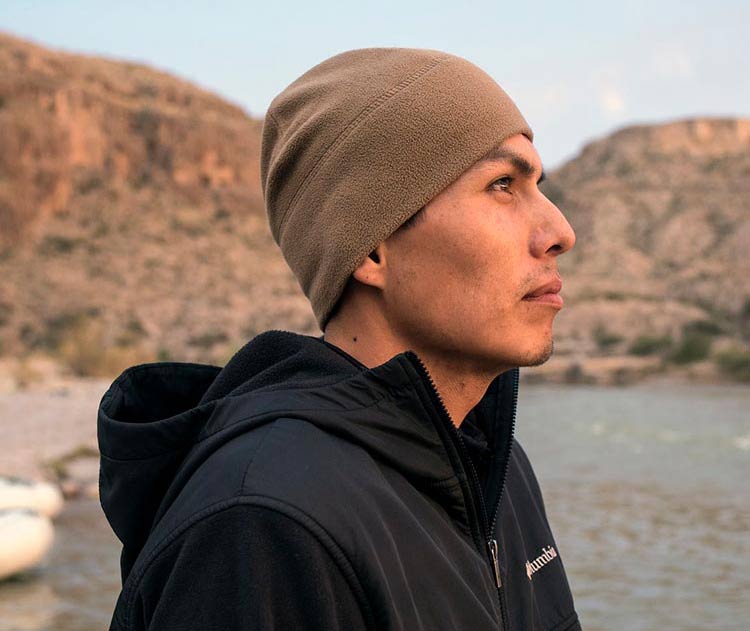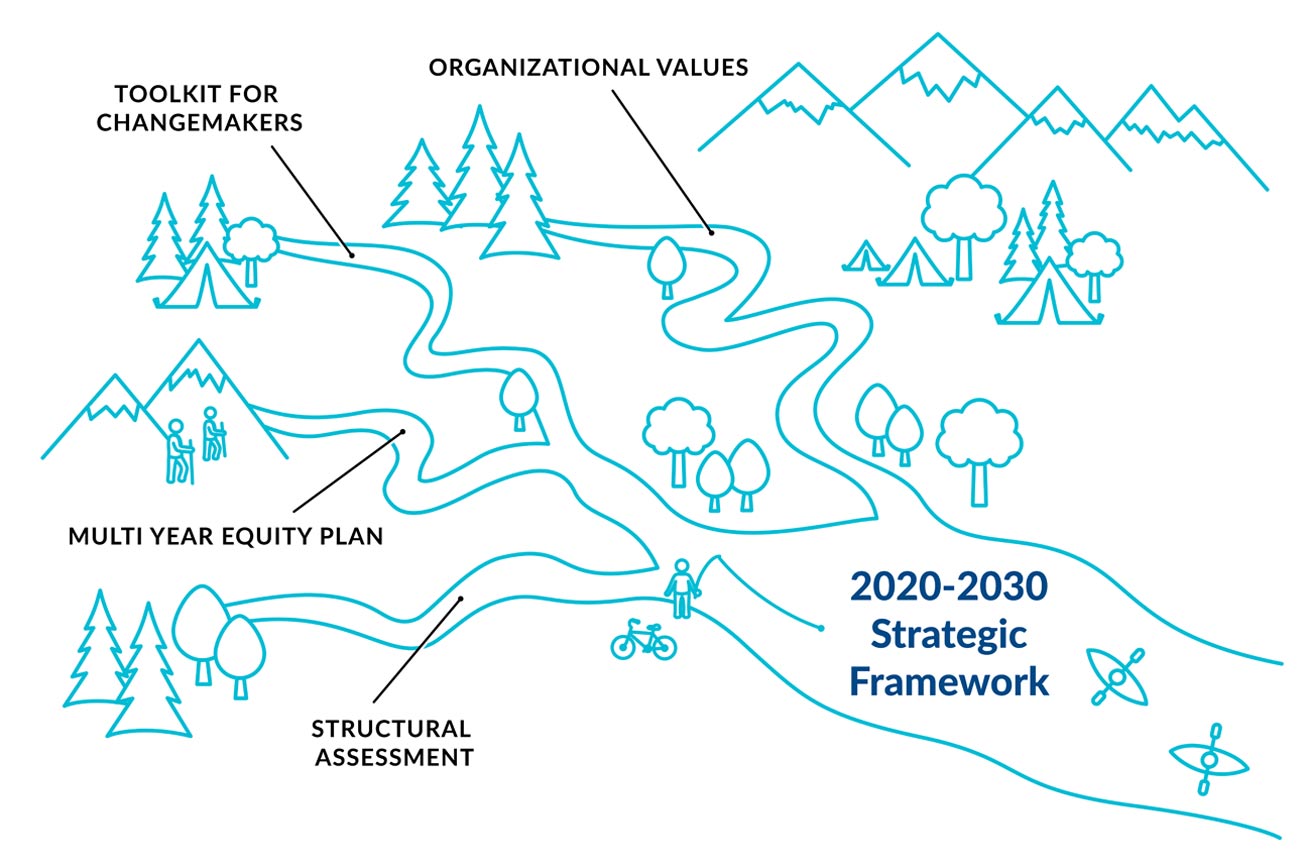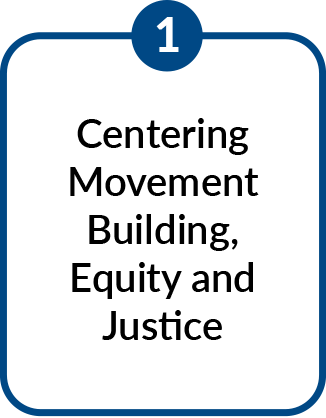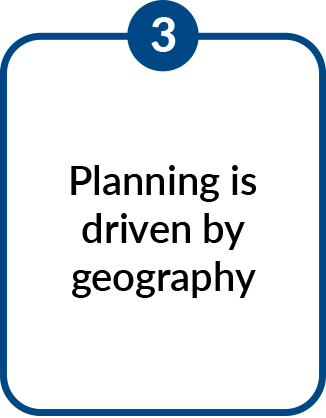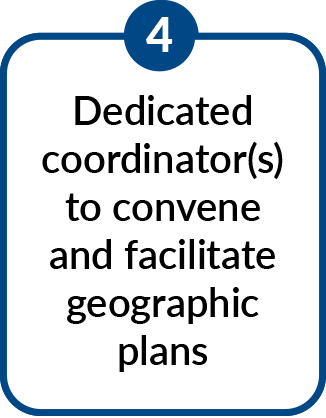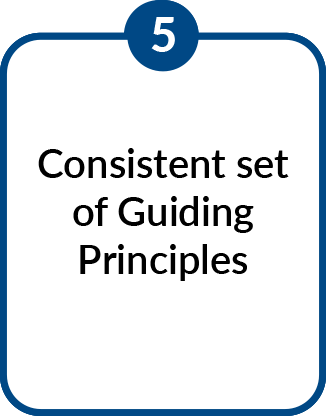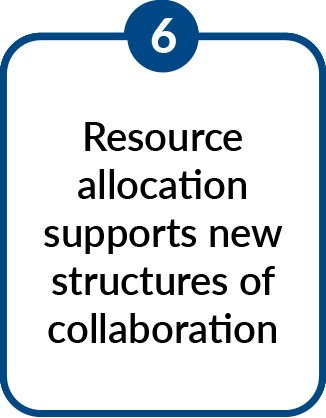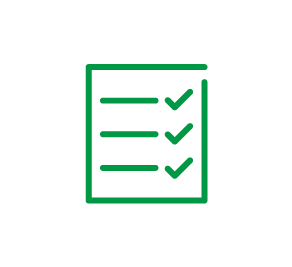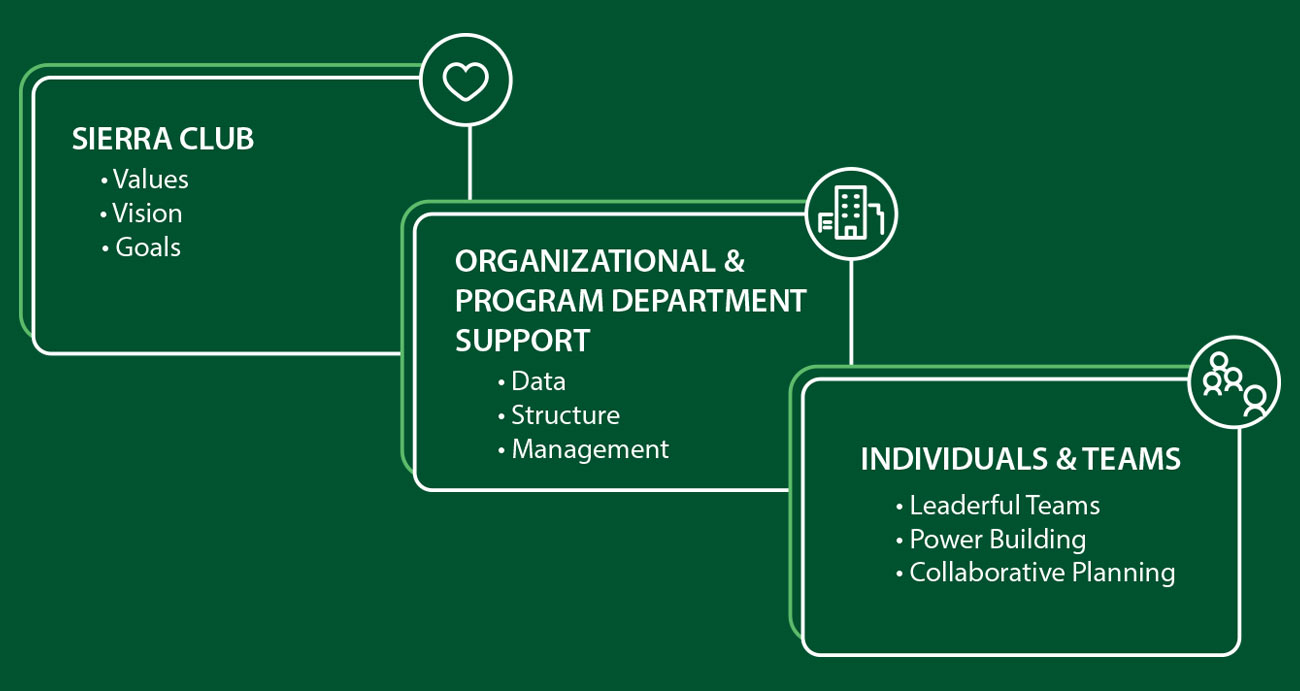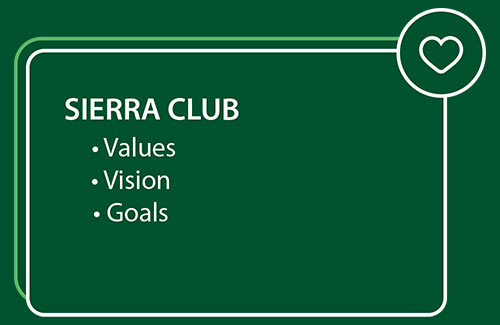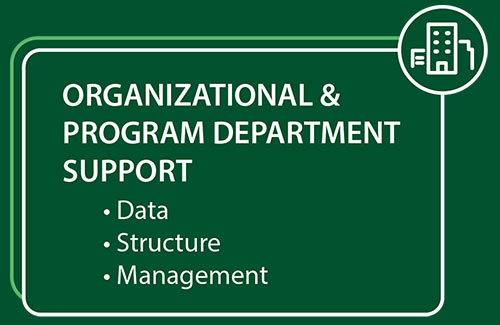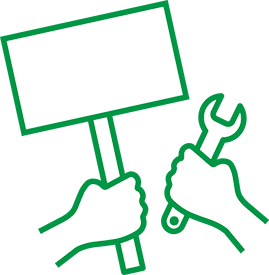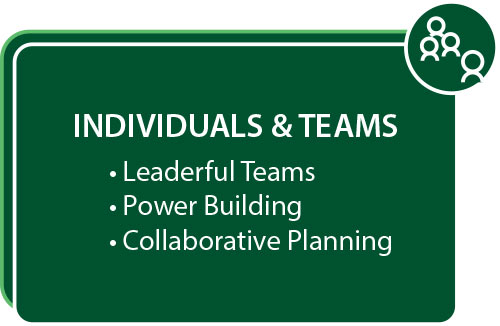Decarbonize the electric sector and reduce oil use by 50% by 2030, achieve 100% clean energy in all sectors by 2050;
Building on Our Strong Foundation of Collaborating and Winning
Today more than ever, Sierra Club understands the power of team-building, partnership and winning transformational campaigns. Across our movement we have built coalitions, developed and empowered leaders and changed systems. Our teams and partners have worked through differences, built trust, had hard conversations and ultimately found common goals. Let’s hear some stories about our inspiring work around the country.
Setting Bold Goals for the Future
Our Goals:
*Sierra Club and Sierra Club Foundation Boards of Directors are developing a shared Strategic Framework, which will be complete by May 2020.
How We Will Win, Who We Will Be
The time is now to come together to develop the leadership and strengthen the partnerships necessary to clarify our path to the future — to ensure everyone’s fundamental right to clean energy, public lands, and clean air and water. Solving climate change won’t just change how we power this country, it will change who holds power in this country.
Build Long Term Power: The Power House
1
2
3
4
5
6
1
Base Building:
Recruits and retains our base in size, capacity, and skill in support of our values, vision and goals.
(Breadth)
2
Leadership Development:
Including issue knowledge, organizing skills, and political education
(Depth)
3
Partnership and Movement Building:
How are we building transformational partnerships
(Networks)
4
Local Victories:
Executing campaigns and winning local victories that provide people with a sense of their own power and contributions to larger outcomes.
(Intensity)
Center Movement, Equity and Justice
Sierra Club’s 2019 Multi-Year Equity Plan outlines clear ways that all of us can center equity and justice. Part of this begins with living our equity values to ensure we are practicing empathy, committing ourselves to self-transformation, and always seeking out ways to build just relationships. We do this because we know that how we win matters and that those most impacted by the issues we work on must have a seat at the table where decisions are made.
Why Clean Energy For All (CEFA)?
Clean Energy For All (CEFA) tested how we could better collaborate across our clean energy work at the national and state levels in order to win even bolder victories, build long term power and center equity and justice, and raise more broadly flexible funding to support our work. During this multi-year process we conducted pilots in 10 states, gathered feedback from hundreds of volunteers and staff and a dozen teams and conducted more than 200 interviews. Beyond the initial CEFA focus we were able to learn from and test promising ideas that many of our teams across the Sierra Club were seeing in their daily work.
Our major milestones are in the timeline below which shows how our history led us to this Toolkit – the many people involved over the years in our journey, our historic processes that led to CEFA and the impacts we are already seeing in our work.
1
2
3
4
5
6
7
8
9
10
11
12
13
14
15
1
May 2014: The Board adopted the Climate Movement Task Force recommendations embracing ambitious climate protection goals and calling for Sierra Club to step up its efforts to engage its base and contribute to building the broad, inclusive movement powerful enough to achieve just and equitable climate solutions.
2
May 2015: To implement our climate movement goals, the Climate Movement Next Steps team called for articulating our vision and values, creating a unifying narrative for our work, and identifying key capacity building needs.
3
Jan. 2016: Staff and volunteers met for our Ready For February meeting to create a plan building on the Climate Movement Next Steps recommendations. Following this meeting, we conducted interviews and surveys of 200 stakeholders about how we can better coordinate across multiple campaigns at the state level. Our findings were released in Aug 2016 in the 100% Clean Energy Update Memo.
4
Jan.-May 2017: The CEFA Change Management Team (initial members: Sarah Hodgdon, Jesse Simons, Robin Mann, Becki Clayborn with consultant Jen Wilson; Eva Hernandez-Simmons joined in Sept 2017 and Alicia Ybarra joined in Nov 2018) convened, evaluated the opportunities and challenges, and recognized a need for structural and process improvements to strengthen collaboration. We conceptualized six Building Blocks as a framework for an internal change process which were vetted with a diverse group of stakeholders.
5
March 2017: The Memo: Interim Guidance on new Hires in Program Dept was released. This memo outlined how to align our hiring decisions with our newly articulated vision for change.
6
June 2017: After an initial engagement process, we released the CEFA Update Memo in order to share with stakeholders and begin work on implementing our two-year vision for change.
7
Oct. 2017: We vetted an early draft of the Collaboration Framework Memo with key stakeholders. Their feedback was then incorporated into a final draft which was ultimately released in Dec 2017.
8
Dec. 2017: The Collaboration Framework Memo was circulated organization-wide. It initiated the Collaborative Engagement Process, which was intended to pilot, test and learn about the Building Blocks framework. The CEFA Core Team was formed to support pilots and implement the Collaborative Engagement Process. (Members: Eva Hernandez-Simmons, Becki Clayborn, Hop Hopkins, Karissa Gerkhe, and consultants Ari Trujillo Wesler and Jen Wilson)
9
March 2018: We selected five full and five light touch pilot sites to test the Building Blocks and the Collaboration Framework at the state and regional level. The full pilots sites were IL, SoCal, NY, PA and TX. The light touch pilot sites were CO, FL, GA, MN and OR/WA.
All 10 pilots used the CEFA Pilot Resource Guide to direct their work. But full pilot sites also developed at least one research question to test.
10
Jan. 2019: The last phase of the CEFA Stakeholder Engagement Process Plan was launched. We distributed a survey to all staff and volunteers across the organization. We also conducted multiple small group, team and one-on-one consultations.
11
March 2019: All 10 pilot programs concluded and we completed our stakeholder consultations as well as our organization-wide survey.
12
April 2019: We analyzed the data and synthesized our findings. We used the data to make decisions regarding structural and non-structural changes.
13
May 2019: We began the Program Department structural assessment and reorganization process, informed by key lessons and data from the Collaborative Engagement Process.
14
August 2019: We put forward our largest CEFA ask for $51m over 2.5 years to support the full spectrum of our clean energy work across multiple campaigns. . The proposal process embodied the values of CEFA by including collaboration across stakeholders upfront before finalizing the proposal.
15
Summer 2019: We released the Changemaker Toolkit outlining our findings and providing strategies and solutions for moving forward more powerfully together.
The CEFA Process
Initially CEFA focused on three things:
- Working together more effectively on our clean energy campaigns at the state and national level;
- Integrating, elevating and tracking long term movement building, justice and equity in our planning process;
- Raising more flexible funding in order to meet our goals of 100% clean energy centered in equity, justice and movement building.
We proposed 6 building blocks as a Collaboration Framework…
The CEFA Process
Initially CEFA focused on three things:
- Working together more effectively on our clean energy campaigns at the state and national level;
- Integrating, elevating and tracking long term movement building, justice and equity in our planning process;
- Raising more flexible funding in order to meet our goals of 100% clean energy centered in equity, justice and movement building.
We proposed 6 building blocks as a Collaboration Framework…
And tested them in the world….
We Quickly Learned that Our Structures and Systems Had to Change
Here is Deputy Director Eva Hernandez-Simmons to tell you more….
We wanted to learn what changes are needed to build power and win big on our goals. Our Collaborative Engagement Process expanded to gather organization-wide feedback on:
- Building Blocks
- Power Building Indicators
- Restructuring Program Department
54
Hours
of 1:1’s, focus groups, team meetings and pilot interviews
163
Surveys
A national survey across all levels of the organization
What We Learned
A movement thrives when team-members trust each other and the ways we work together, are able to navigate the matrix, and know that their vision is aligned with the organization’s goals. We learned that together, we must build trust everywhere; that simple and clear management structures and systems are essential to innovation; and that local voices must be part of the strategic planning process from the outset if we are going to achieve our ambitious goals.
Becoming Powerful Together
This is How We’ll Win
Making the changes needed to accomplish our bold organizational goals will require individuals, teams, the program department and the organization to invest in changing structures, systems and behaviors. The following actions are required of us all if we are going to become fully powerful together. Consider this the beginning of a new era of collaboration in Sierra Club – and we’ll keep evolving as we learn.
What’s Next
A Look Ahead
2019
2020
2021
First Steps to Take:
Register for trainings on the Trainings Campfire Page
Enroll in Equity Workshops on the Equity Dept Campfire Page
Take the Self and Team Readiness Assessments to discover your next steps on the Pathways journey
Becoming Changemakers
We are all Changemakers
Transforming ourselves, Sierra Club and our world – A Message from Mike Brune



